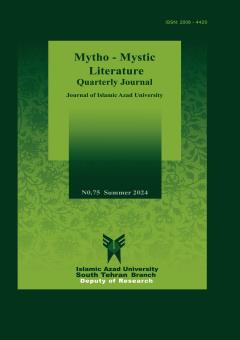-
-
List of Articles
-
Open Access Article
1 - The Influence of Intertextuality in the Novel 'Suvashun' on Audience Engagement During Reading
Esmaeel BANIARDALAN Shahrokh Amirian Doost -
Open Access Article
2 - The Role of Sacred Objects in Healing: A Classification and Analysis with Focus on Key Mystical Prose Texts from the First Seven Centuries of Hijri
Afrooz KHodabandeloo s.mohsen hosseini s.ali ghasemzadeh -
Open Access Article
3 - Exploring Similarities between the Iranian Mourning Ritual of Siavash and Greek Rituals of Dionysia and Adonia
Elham Khodavandgari S.Hashem Hoseini -
Open Access Article
4 - Analyzing the Myth of Ārash through Max Müller's Solar Mythology Theory
Fatemeh Shakibaei Mehyār Alavi Moghaddam Mahmoud Firouzimoghaddam -
Open Access Article
5 - Exploring the Types of 'Sahv' in the Mystical Worldview of Ruzbehan Baqli Shirazi
fatemeh toobaie Mohammad Yusuf Nayyeri -
Open Access Article
6 - Analyzing Binary Oppositions in Hassan Alwan’s Novel Mouton Sageer Through the Eyes of Iranian Mystics
رضا ناظمیان mansooreh doagoo
-
The rights to this website are owned by the Raimag Press Management System.
Copyright © 2021-2025







